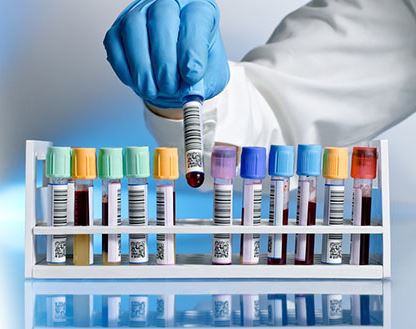
The FDA regulates in vitro diagnostic devices (IVDs) as medical devices. IVDs analyze human samples, such as blood, saliva, tissue and urine. However, in the past, the agency did not use its authority to regulate what are known as “laboratory-developed tests” (LDTs), tests developed and performed at a single laboratory, with all samples sent to that particular lab for testing. Instead, it focused on commercial tests kits, which are broadly marketed to laboratories or the public. These tests had to undergo the same pre-market approval process as other medical devices regulated by the FDA, including, in some cases, clinical studies demonstrating that the device is safe and effective for its intended use.
Historically, LDTs were developed by hospitals, researchers and academic medical centers for their own use. That is no longer true. In the past 15 years or so, there has been an explosion in the use of LDTs by commercial labs and biotechnology companies. The FDA now estimates that there are about 11,000 LDTs offered by 2,000 laboratories. One estimate is that the results of clinical lab tests (although not exclusively LDTs) influence 70% of health care decisions. (See the Congressional Research Service Report’s exhaustive analysis of FDA regulation of IVDs and inclusion of LDTs for more on the history and current use of LDTs.)
Do you have any idea whether the IVDs that have poked around in your blood or tissues are FDA-approved or unapproved LDTs? (Does your physician?) Do you know what evidence (if any) there is standing behind these tests? No? Me either. That’s because there is no requirement that anyone give you this information.
There is some already some regulatory oversight of labs that offer LDTs. A federal law, The Clinical Laboratories Improvement Act (CLIA), requires assessment of whether a lab is able to test according to instructions and detect what is intended to be detected, that is, the test’s analytical validity. However, a key element is missing in that evaluation: clinical validity. Does the test accurately diagnose or predict the risk of a particular clinical outcome?
The FDA announced last year that it would henceforth use its medical device regulatory authority to regulate LDTs. This caused a big brouhaha among the labs and others affected by the decision. Genetic testing companies are big players in the LDT market.
One reason for the consternation is (surprise!) money. Companies who jump through the FDA’s hoops and get approval say that labs using unapproved tests don’t have to shoulder that expense and are given an unfair competitive advantage. Some of these tests, they say, do the same thing as their approved tests, so why the difference in regulation? Labs using LDTs are up in arms that they may now have to go to the trouble of getting approved, and no doubt some of them have legitimate concerns. Of course, they also run the risk that their LDTs will be rejected by the FDA. (Some of them certainly should be, a point to which we’ll return in a minute.)
Lining up on the pro-FDA side are the American Cancer Society Action Network, the American Society of Clinical Oncology, and the Association of Public Health Laboratories. Lining up against the new requirements are some genetic researchers, a trade group representing clinical labs, and labs like ARUP, a non-profit lab owned by the University of Utah. ARUP runs a lot of tests for large teaching hospitals and government agencies that are rarely used and so not provided elsewhere. The American Medical Association doesn’t like the idea either.
Bogus tests shielded by lack of LTD regulation
Opponents have some rather unsavory company in the form of a “chronic Lyme disease” (CLD) proponent organization, Lymedisease.org, whose representative spoke at a public hearing on the FDA’s proposed actions last week. Lymedisease.org is incensed that the Infectious Diseases Society of America and the CDC have overly-narrow (in their view) criteria for Lyme disease diagnosis, as well as the FDA’s attempt to regulate labs tests that CLD proponents prefer over the ISDA and CDC’s judgment regarding testing.
Also in the “no” camp is the Alliance for Natural Health, the “health freedom” folks, who also had a rep at the public hearing. The ANH reliably finds a big corporate boogeyman behind every government regulation it doesn’t like, and, true to form, this time it’s the “drug, device, and biologics industry—the heavy-hitters who are LDTs’ chief competition.” Even though companies who employ LDTs are, by definition, part of the device industry.
According to the CRS Report, FDA oversight of LDT IVDs would include:
- Regulation of the safety and effectiveness of the test
- Pre-market review of the test
- Demonstration of clinical validity
- Systematic adverse event reporting
- A process for corrections or results
The FDA issued draft guidance for industry on both the framework for, and notification requirements of, LDT oversight. Like regulation of other medical devices, its approach will be based on the risk of harm the test presents. In its discussion of the regulatory framework, the FDA says it:
has serious concerns regarding the lack of independent review of the evidence of clinical validity of LDTs. Clinical validity is the ability of a diagnostic device to measure or detect the clinical condition for which the device is intended. Clinical validity is not evaluated under [CLIA] regulations. LDTs that have not been properly clinically validated for their intended use and are used to make critical clinical decisions potentially put patients at risk of missed or incorrect diagnosis, failure to administer appropriate treatment or administration of potentially harmful treatment with no benefit.
And what better way to demonstrate the validity of the FDA’s concerns than the bogus laboratory-developed diagnostic tests used by practitioners of pseudomedicine, such as naturopaths? Results of these tests are used as a pretext to treat diseases and conditions a patient either doesn’t have or doesn’t require treatment. Like Bernie Madoff’s bogus investment account statements, the test results purport to something that isn’t there.
We’ve already touched on “chronic Lyme disease.” The American Lyme Disease Foundation explains what happens when validated testing is ignored, an analysis that could easily apply to the use of other nonstandard tests (emphasis added):
Despite [FDA and CDC] warnings, some physicians continue to order nonstandard tests for the diagnosis of Lyme disease, mistakenly believing that these tests — simply because they give positive results when other tests do not– are more sensitive; however, the results in most cases are falsely positive and lead to misdiagnosis…A false diagnosis of Lyme disease can have dire consequences in that a patient may be subjected to a prolonged and unproven treatment regimen to cure an infection that does not exist; this is often done at considerable personal expense. Aside from prolonging suffering and pain, misdiagnosis denies a patient the opportunity to receive proper care and treatment for the condition actually causing their symptoms. Under such circumstances, the patient is treated very much like a “guinea pig” and becomes a victim of an irrational process in which some unscrupulous practitioners derive significant financial gains from the administration of unproven and in many cases unsafe remedies.
CLD tests aren’t the only ones. Various “toxicities” are a go-to quack diagnosis for otherwise-vague or unexplained symptoms. And metals are a reliable cause of faux toxicity. To diagnose “heavy metal toxicity,” we have the popular LDT “provoked urine test.” As Orac explains:
urine levels of various metals are measured after a patient has received a chelating agent that results in the metals being excreted into the urine. Naturally, elevated levels of various chelated metals are routinely recorded because that’s exactly what one would expect after the administration of a chelating agent.
You may be less familiar with the “Organix” diagnostic test, a Genova LDT. Genova offers the “Organix Comprehensive nutritional test profile,” which “provides vital patient information from a single urine specimen.” I’ll have to give Genova that — if its website is to be believed, you do get a heck of a lot of information:
- Functional vitamin and mineral status
- Amino acid insufficiencies like carnitine and NAC
- Oxidative damage and antioxidant need
- Phase I & Phase II detoxification capacity
- Functional B-complex vitamin need
- Neurotransmitter metabolites
- Mitochondrial energy production
- Methylation sufficiency
- Lipoic acid and CoQ10 status
- Markers for bacterial and yeast overgrowth
And why is this important? Genova helpfully explains everything in an impressive 15-page “Organix Profile Interpretive Guide,” complete with illustrated charts.
The study of human metabolism has revealed how vitamins and minerals are used to perform those hundreds of necessary chemical reactions. This is a test that shows your doctor weaknesses in your metabolism. Many of the weaknesses can be overcome by increasing your intake of a vitamin or other essential nutrient …
Ah, so that’s it. Your doctor can use it to sell you vitamins and minerals. And maybe other stuff you don’t need, such as treatment for “yeast overgrowth.” If you’d like a more scientific evaluation, here’s one from an insurance company explaining why they won’t pay for the Organix LDT.
Finally, I don’t know how many of these tests are LDTs, but if you want to see an outrageous abuse of patients, take a look at this Great Plains Laboratory list of recommended lab tests for various diseases and conditions, including “vaccine injury.” One of the most recommended tests is the “IgG Food Allergy test with Candida.”
“Valid scientific evidence” could end pseudo-testing
According to the CRS Report on FDA regulation of IVDs, as with all medical devices, the FDA uses a risk-based scheme, divided into Class I (least risk), II, and III devices. For IVDs, risks are classified according to the intended use and risk relative to that use.
The intended use is established according to the claims the manufacturer or sponsor intends to make for the device, and includes the target population and the clinical setting for the use of an IVD…For IVDs, [the risk relative to use] is the risk to the patient of an incorrect test result.
Class III medical devices, including IVDs, are those that pose “potentially unreasonable risk of illness or injury” and are subject to premarket approval (PMA). A PMA application must provide “valid scientific evidence,” usually including clinical studies.
Any test that is used to diagnose a disease or condition that is not supported by sufficient evidence that it actually exists and is not recognized as a valid medical diagnosis (like the examples I have given) should necessarily be a Class III device and require PMA. This would eliminate at least some of the bogus testing used by pseudoscientific practitioners who prey on unsuspecting patients.
This is especially critical in light of the current health care practitioner licensing scheme we have in the US (discussed many times on the blog). If the states are not going rein in practitioners — like naturopaths and chiropractors, who have no respect for the scientific method and evidence — then at least the FDA could eliminate some abuse and exploitation of patients by getting rid of the illegitimate tests on which they rely.
You can comment on the FDA’s draft guidance until February 2, 2015. While there may be legitimate concerns about the FDA’s new approach to LDT regulation, I hope all supporters of science-based medicine will voice their support for eliminating bogus tests.

